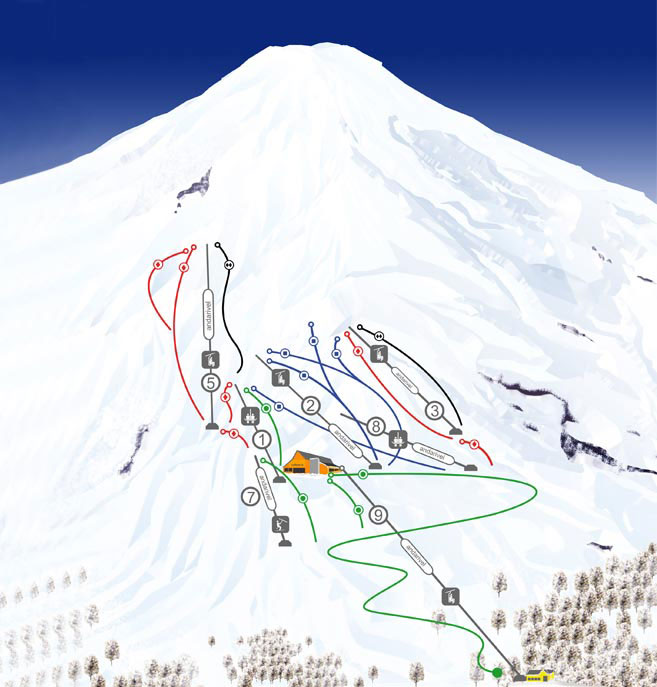I recently had the pleasure of attending a wine dinner at a local country club featuring winemaking trailblazer Paul Hobbs. The Paul Hobbs wines from both the Sebastopol (California) and Viña Cobos (Mendoza, Argentina) wineries have attained cult-like status in our household. It was a bit ironic that we were able to meet up with him in our back yard of Paradise Valley, while missing him during past visits to Sebastopol and Mendoza (see my Argentina post from May 7, 2013). Small wonder the man is so elusive; not only does he travel thousands of miles between his own wineries, but he is also a consultant to approximately 30 wineries around the world in countries including Chile, France, Hungary and Canada.
| View of the Andes from Mendoza |
On this occasion, we were treated to a discussion not only on the wines served, but also on his story and how he got into the winemaking business. Raised near Buffalo, NY, in the Lake Ontario area, Paul is the second oldest of 11 children. His father farmed land that had been in his family since the 1800's. "Farm families are working families, " Paul emphasized, "there is a strong work ethic." Being staunchly Catholic, his parents had made a pact that there would be no alcoholic beverages served at the dining table. His experience with wines had therefore been limited to the sacramental wines served during Mass. One day, his father, perhaps on a whim, drove to town to consult with a wine expert about serving a wine at dinner that would be undetected by all, even his wife. He brought it home, served it in Dixie cups, and asked everyone around the table to describe the flavors. Honey, apricot, orange marmalade, roasted nuts...there were various opinions, but all, including his wife, concurred that it was an amazing fruit juice. What was the bottle? A 1962 Chateau d'Yquem.
Shortly thereafter, Paul's father decided to convert some of the apple orchards to vineyards. During summer break from studies at the University of Notre Dame, Paul logged many hours gaining invaluable experience cultivating grapes for wine production. However, he never thought about a life in agriculture or wine: rather, his passion was medicine. In an unusual twist of fate, a Pre-Med professor of his, who had worked at Christian Brothers winery in Napa, suggested that he take a wine appreciation course. The professor, with the support of his father, then urged Paul take a deviation in his career path, and convinced him to enroll in a Masters in Viticulture and Oenology at UC Davis.
With his firsthand experience in farming and love of science, Paul impressed all with his knowledge on the chemistry of wine. This led to his first winemaking gig in 1978 when he met Robert Mondavi and worked with the Opus One team. In 1985, he moved to Simi Winery in Sonoma County's Alexander Valley as assistant winemaker focusing on the Cabernet Sauvignon program. It was during his stint at Simi in '88, that he ventured south of the equator in search of a challenge, which came in the form of a (then) little known grape variety called Malbec. Through his good friend from UC Davis, Jorge Catena, Paul was introduced to Nicolás Catena and the Catena family wineries that operate under the Catena and Alamos labels in Mendoza. During the period from '89-97, he worked diligently with the Catena family to build a Malbec program. His belief was that the variety was the future of Argentine wine exportation. His intuition paid off and the partnership with the Catenas led to his formation of his own winery, Viña Cobos, in Luján de Cuyo just outside Mendoza. He shared with us that his life-long goal has been to produce the 1st Malbec to win 100 points from a wine critic. And congratulations are certainly in order, for the fall of 2014, James Suckling published the following:
Viña Cobos Malbec Perdriel Luján de Cuyo Cobos 2011James says: The nose is phenomenal in this wine. It makes my head spin, with so many beautiful perfumes of violets, lavender, sandalwood, minerals, dried fruits and figs. Full body and phenomenal depth of fruit that gives layers of structure and richness. I am amazed. This is a wine to try in 2020 but so impressive now. This is the Harlan of Argentina but from malbec instead of cabernet sauvignon. 500 cases made. This is a good as it gets for malbec. 100 points.
 |
| A bottle of Cobos Volturno from our visit to Viña Cobos |
Paul praises the benefits of sustainable farming in revealing terroir, the unique flavor and aroma of the grapes. He emphasized the importance of composting the grape pressings to fertilize the vines, of not using filters or yeast from a factory, but rather indigenous bacteria for the fermentation process. Paul concluded by saying there are three integral components to making a great wine, each one adding an important element in the wine making process: soil, climate and the interaction of man. The latter, the interaction of man, in his opinion, is the most important. "The greatest wines are made with the least intervention," reiterates Paul, "let the wine do the talking." Sounds great to me...I plan on doing the drinking. Cheers!
| A group of buddies at Paul Hobbs in Sebastopol in 2009 |
All photos by Marci Symington for texaztaste.blogspot.com.








